
The rich, golden colours of the Sound at sunset. Photo: Layton Findlater
Rudyard Kipling called it the “Eighth Wonder of the World” and it's not hard to see why. Tall mountain peaks are reflected in mirror-like water that changes colours with the sky. Waterfalls thunder down steep granite cliffs, and majestic trees stand tall as far as the eye can see. This is nature at its boldest and most breathtaking.
Fiordland mountain peaks in winter. Photo: Layton Findlater
Kipling was not the first to be awestruck by the Sound’s stunning scenery. In 1883, explorer James Hingston wrote, “For thousands of feet upwards the eye looks upon straight cut rocky frontages, not worn smooth by time, or by wind or water, but as sharply defined and as fresh looking in all respects as if riven asunder but yesterday by the stupendous wedges of Titanic Masons.”
Mitre Peak and mossy rocks at low tide in Milford Sound. Photo: Todd and Sarah Sisson, view on website
Indeed, the beauty of Milford Sound is so spectacular and otherworldly that it was used to depict parts of Middle Earth in the Lord of the Rings movies. And, looking at these photographs, we can see exactly why Peter Jackson chose it: there really couldn't be a more magical movie location.
The sun's first rays on Mitre peak. Photo: Todd and Sarah Sisson, view on website
The Maoris, who first discovered Milford Sound, named it “Piopiotahi” after the piopio, a thrush-like bird that once lived on the forest floor. In Maori legend, the mythical hero Māui died in an attempt to win immortality for mankind. The piopio, it is said, flew to this fiord to sing its songs of mourning. Sadly the piopio itself is now no more, and has gone the way of 57 of New Zealand’s other native birds - extinction.
The soft pastel colours of dusk at Milford Sound. Photo: Todd and Sarah Sisson, view on website
The Maoris also have a legend about the creation of Milford Sound, which they say was sculpted by the god Tu Te Raki Whanoa (the Titanic Mason of James Hingston's poem, perhaps?). The story goes that the god moved up along the coast using his giant adze to carve out beaches and islands. As he went along, his skill at carving became better and better, so that when he reached Milford Sound he was able to make his most beautiful creation.
The yellow grasses of Fiordland. Photo: Layton Findlater
Milford Sound is actually a fiord off the Tasman Sea, which lies about 9 miles (15 kilometres) away. Before the sea waters flooded it, it was a glacial valley, its rugged cliffs shaped by ice. The mountains above soar to an impressive 5,500 feet (1,675 meters), while the fiord basin itself plummets to 1,280 feet (390 meters) below sea level.
When it rains, hundreds of waterfalls appear, running down the surrounding cliffs. Photo: Layton Findlater
Among Milford Sound's most enchanting features are its exquisite waterfalls. There are two permanent falls - Stirling Falls, which drop 508 feet (155 meters) to the water below, and Bowen Falls, which plummets down 531 feet (162 meters). During heavy rain, however, there can be hundreds of temporary falls rushing down the cliffs. Some of these can reach 3,280 feet (1,000 meters) long! Other, smaller waterfalls are carried away by the wind before they can even reach the ground.
Milford Sound and surroundings are known for dramatic waterfalls. Photo: Layton Findlater
Those hoping to see the full majesty of the Sound when it is filled with waterfalls are in luck. Milford Sound is one of the wettest places in the world, with 182 days of rain a year. So it's really not too hard to find a day when there’s enough precipitation to allow for the wondrous watery cascades for which the Sound is famous.
A cascading waterfall. Photo: Layton Findlater
All these downpours have effects that go beyond creating scenic waterfalls, though. Sometimes, the force of the water is enough to uproot the trees high on the cliffs, sending them crashing down below.
Russell lupins along the road to Milford Sound. Photo: Todd and Sarah Sisson, view on website
As mentioned earlier, the Maori were the first people to find and enjoy Milford Sound. Europeans, including Captain Cook in the late 18th century, sailed past the narrow sea entrance without ever imagining the large bays inside!
Mount Christina and the Darran Mountains at dawn. Photo: Todd and Sarah Sisson, view on website
It wasn’t until 1812 that a sealer by the name of John Grono discovered the fiord and, perhaps feeling homesick, named it Milford Haven after his hometown in Wales. Later, a captain named John Lort Stokes surveyed the area and renamed it Milford Sound.
The magnificent valleys speak for themselves. Photo: Todd and Sarah Sisson, view on website
Milford Sound was now officially on the map, but both it and its surroundings still remained relatively unexplored right into the 20th century. The first three people to settle in the region were drawn not by the awesome scenery but by the asbestos and greenstone deposits near the Sound’s entrance. Today, the small town of Milford Sound has a population of just 120, most of whom work either as part of the tourism industry or in helping to conserve the area.
The road to Milford Sound is long, but picturesque. Photo: Layton Findlater
Although there may be a low permanent population here, thousands flock each day to see the amazing views at the Sound, braving the long (but scenic) journey to this remote location. Indeed, the TripAdvisor Travelers' Choice Awards named it the World’s Top Travel Destination in 2008.
The view from beneath a tree. Photo: Layton Findlater
Still more treasures lie below the Sound's reflective surface, which is why it is also a Marine Reserve spanning 690 hectares. The floor of the Sound is mostly a deep muddy basin, as well as an extensive deep reef area. Along the lake shore there is also a small section of shallow rock wall.
Majestic Peaks reflected in the mirror-like surface of the Sound. Photo: Todd and Sarah Sisson, view on website
Because of the high rainfall, the seawater of the Sound is permanently topped with a layer of fresh water. Through a process called ‘deep water emergence’, light is trapped in this freshwater layer and doesn’t penetrate to the salty depths below. What this creates is, in effect, a deep-sea environment in a shallow basin. Ideal for those want see deep-sea fish without having to descend to the depths of the ocean!
The sun peeking through from behind mountains at the Sound. Photo: Layton Findlater
The Sound is very popular with divers, but for those who aren’t so keen on taking to its icy waters, there's always the Milford Deep Underwater Observatory. The observatory is located under 34 feet (10.4 meters) of water and gives people a chance to see the interesting marine life of the Sound close up, and without disturbing that life in any way. As the observatory itself says, “Unlike an aquarium, the fish are free to come and go; it is the people who are contained.”
The waters of the Sound change hues with the sky. Photo: Layton Findlater
There's certainly no lack of sea creatures to be seen at Milford Sound. The inner northern side of the lake is a rock wall area that receives very little direct sunlight. This wall is home to organisms such as colonial sea squirts, anemones, encrusting tubeworms and sponges. These fragile deep-water invertebrates live permanently attached to the rock. The Sound is also famous for its black coral.
The gnarly roots of a forest tree. Photo: Layton Findlater
Apart from the many species of fish, there are also mammals that are lucky enough to call this amazing habitat their home. Seals bask on the rocks all year round, while the endangered crested Fiordland penguins are often seen on the shores. Dolphins also regularly visit the Sound, which even plays host to the occasional whale!
Fiordland also has several scenic rivers. Photo: Layton Findlater
There is, of course, plenty to see on land as well. Milford Sound and the surrounding Fiordland National Park (which is part of a UNESCO World Heritage Area) are full of wildlife. There are many wonderful species of birds, including two species of flightless bird previously thought extinct - the takahe and the kakapo parrot.
Winter in the Fiordland National Park. Photo: Layton Findlater
Not far away from the Sound there are plenty of other magnificent places to explore, including lakes, mountains, limestone caves, and the Sutherland Falls - one of Earth's highest waterfalls, which, in three cascades, drops for a dizzying 1,904 feet (580 meters).
The sun rising over Mount Christina and the Darran Mountains. Photo: Todd and Sarah Sisson, view on website
Currently, the Fiordland Conservation Trust and Department of Conservation are hard at work trying to preserve the environment of Milford Sound and the Fiordland National Park. One example of their current work is the drive to eliminate introduced pests such as rats, stoats and opossums, which threaten the natural wildlife. As is abundantly clear from these beautiful pictures, this amazing site is a natural wonder that is well worth looking after.
Special thanks to photographers Layton Findlater and Todd and Sarah Sisson for sharing their gorgeous images of Milford Sound and its surroundings with us.
Top image: Panoramic view of Milford Sound
Source: YouTube


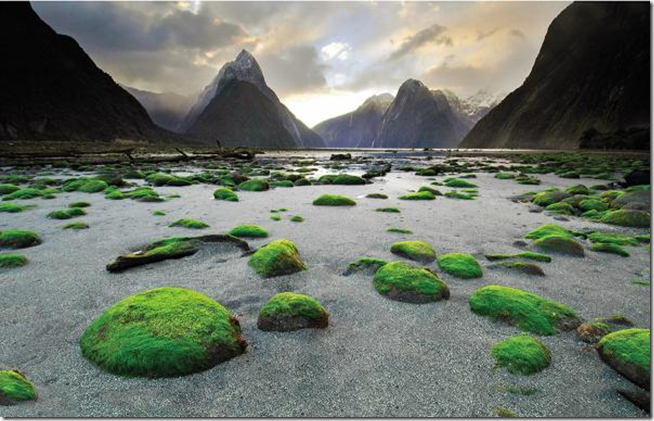


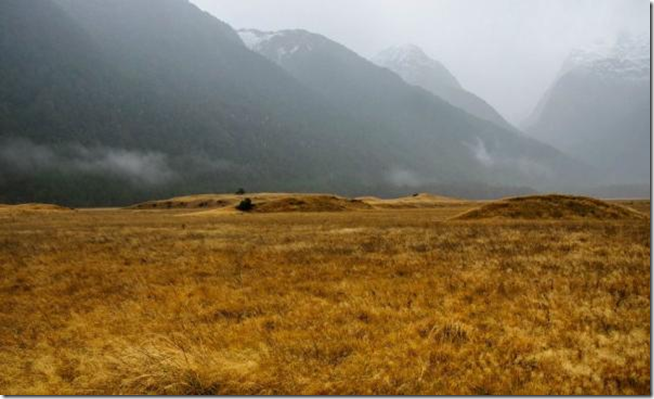
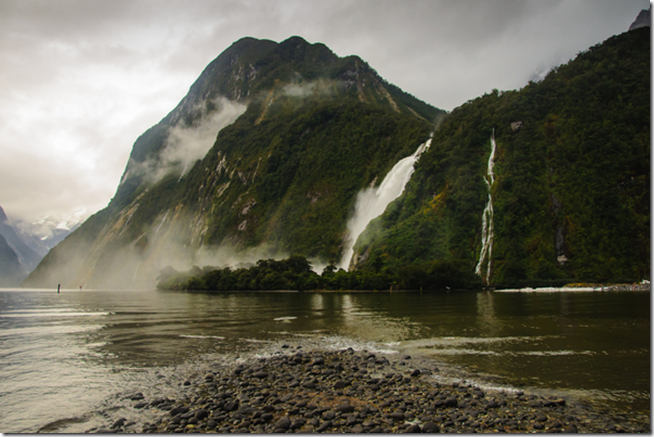
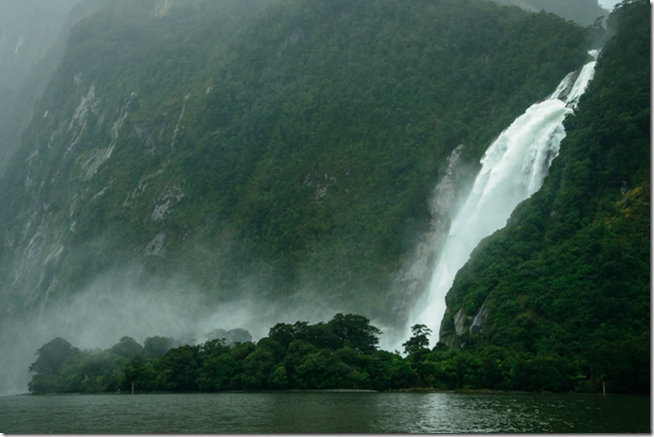
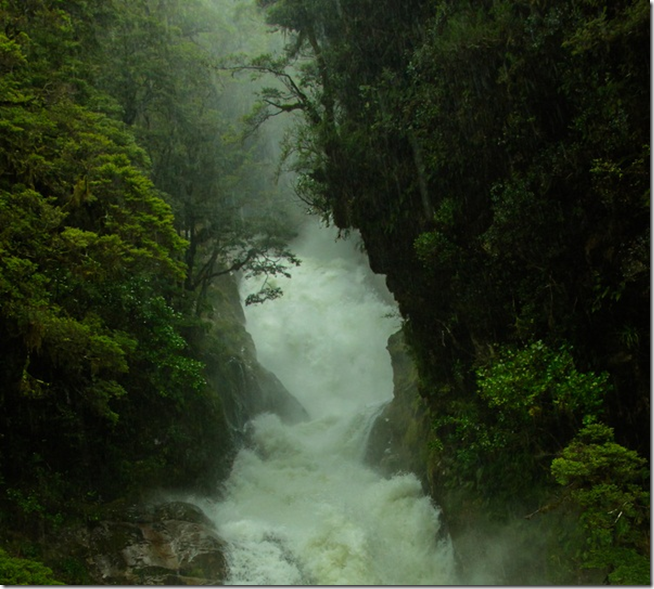
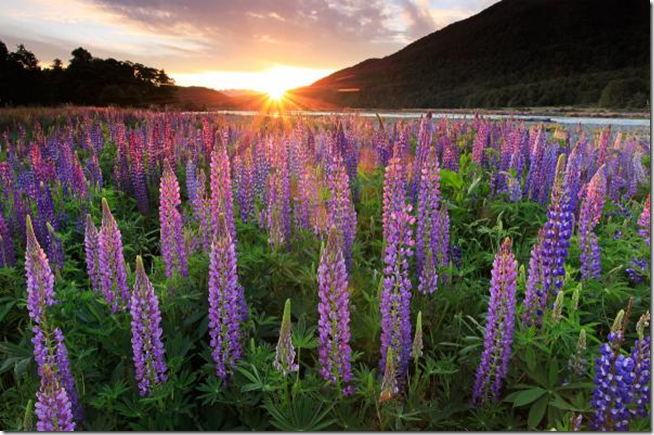
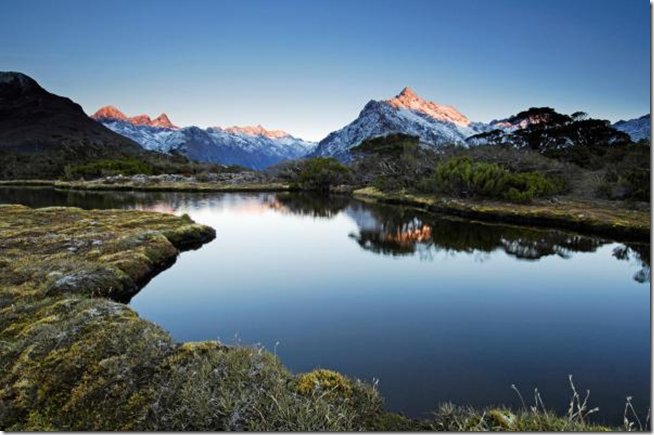
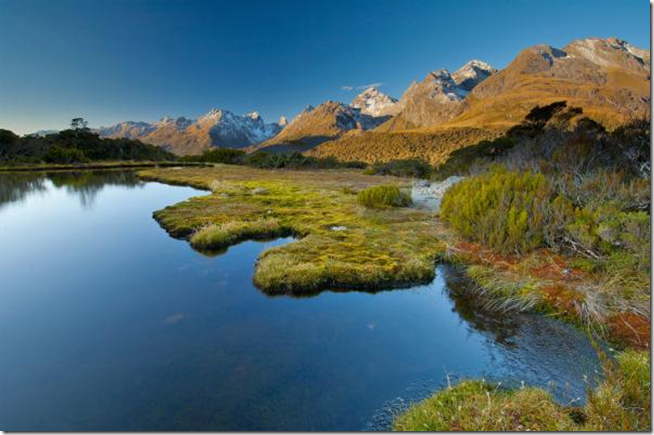
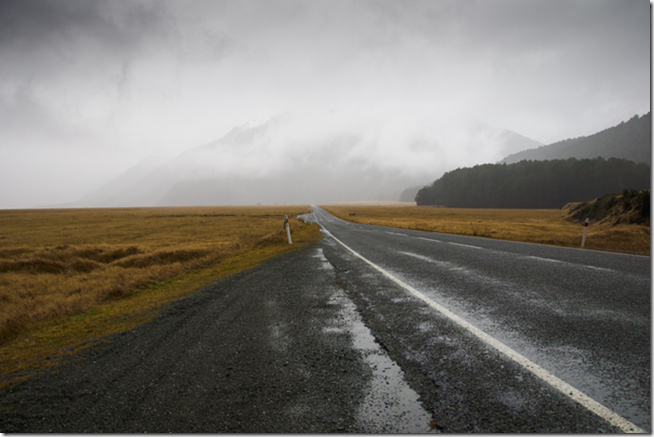
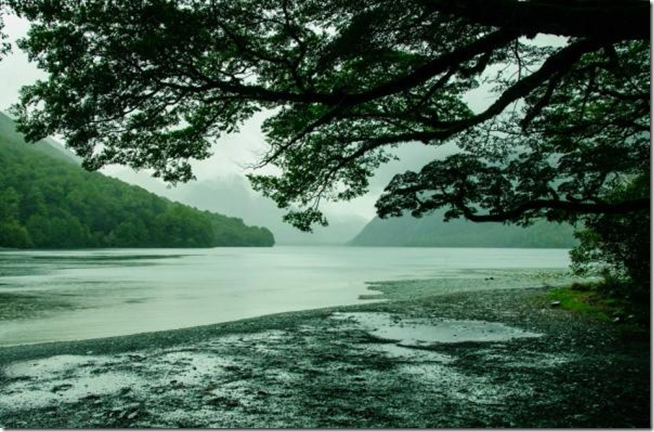
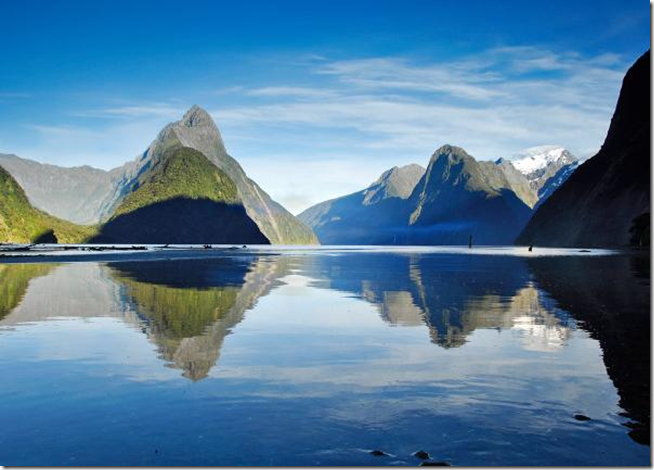


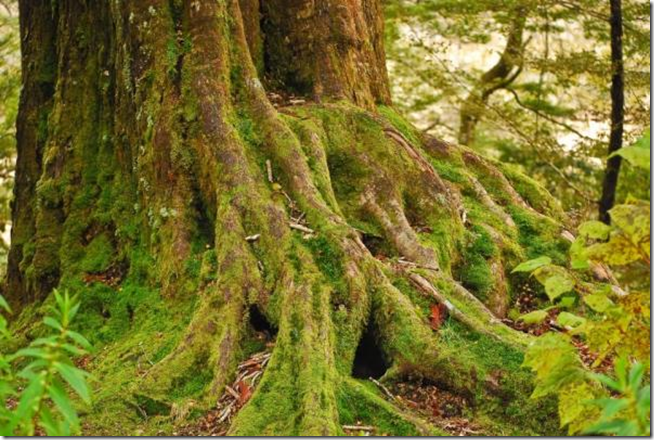
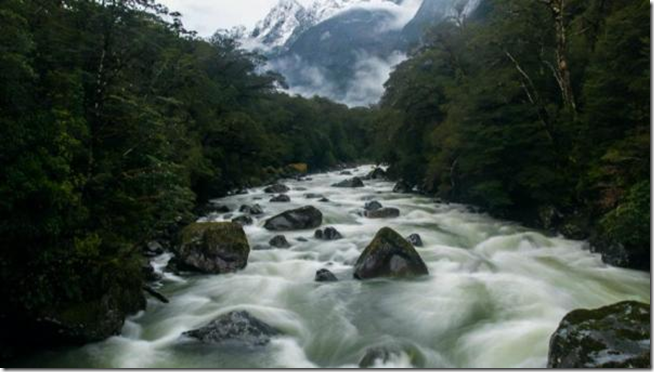
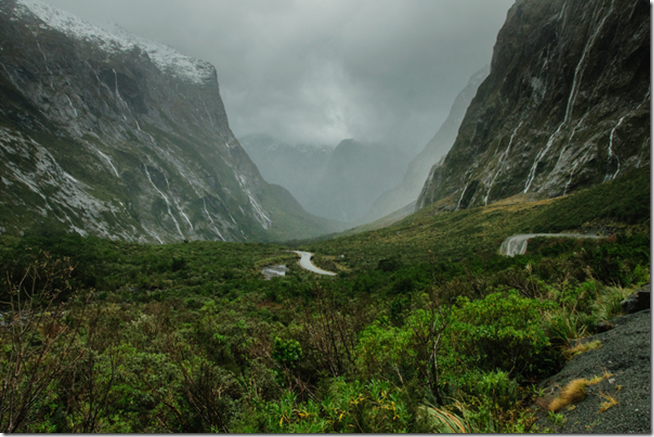

No comments:
Post a Comment
Please adhere to proper blog etiquette when posting your comments. This blog owner will exercise his absolution discretion in allowing or rejecting any comments that are deemed seditious, defamatory, libelous, racist, vulgar, insulting, and other remarks that exhibit similar characteristics. If you insist on using anonymous comments, please write your name or other IDs at the end of your message.